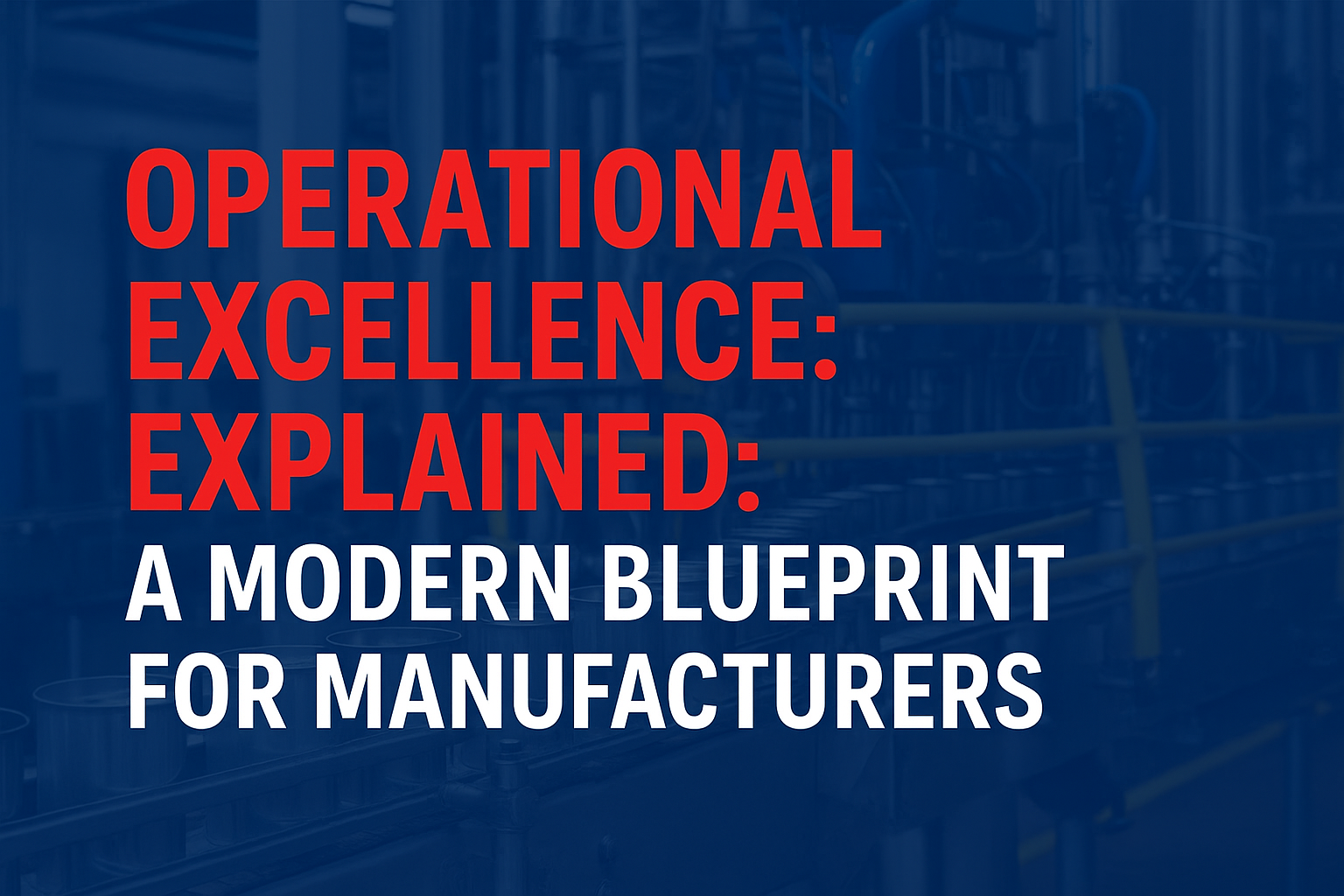Operational excellence (OpEx) is often misunderstood as a set of tools or a cost-saving program. In truth, it is a strategic discipline that transforms the entire value chain—from sourcing to customer delivery. For manufacturers, it means balancing speed, cost, quality, and innovation while enabling cross-functional harmony and enterprise agility.
This blog deconstructs the modern OpEx framework for manufacturers, supported by real-world examples from India, Europe, and the US.
What Is Operational Excellence?
Operational excellence is the pursuit of business performance that is sustainable, adaptable, and aligned with strategic goals. It combines:
– Standardization of core processes
– Real-time visibility through digital tools
– Data-informed decision-making
– Empowered and accountable teams
Successful organizations hardwire OpEx into their operating model—not as a project, but as a way of life.
Pillars of Operational Excellence
1. Strategic Alignment
A leading steel producer in India uses cascading KPIs to align shopfloor metrics with board-level goals. In the US, a global industrial conglomerate institutionalized strategic huddles and OKRs to ensure alignment at every level.
2. Standardization and Process Optimization
A textile manufacturer in Northern India redesigned its cutting and stitching process to reduce variability. In Germany, a technology firm uses digital twins to test and optimize production line changes before implementation.
3. Performance Monitoring
Best performers don’t just track results—they act on them. An Indian FMCG company uses digital dashboards for plant managers and line supervisors to spot deviations instantly. Amazon’s legendary fulfillment speed is rooted in rigorous KPI tracking and analytics.
4. Technology Enablement
IoT-enabled predictive maintenance helped a pharma firm in India reduce unplanned downtime by 40%. In the Netherlands, an aerospace supplier leveraged real-time MES to eliminate manual reporting and improve throughput.
5. Cultural Enablement
Empowered employees are force multipliers. An Indian automotive component manufacturer trains frontline teams in root cause analysis and Kaizen. In the UK, a defense equipment manufacturer fosters accountability through daily tiered reviews and open feedback systems.
Operational Excellence Framework
Vision & Strategy: Define the “North Star” and tie operations to business growth.
People & Leadership: Equip managers as coaches; incentivize ownership.
Process Optimization: Eliminate handoffs, non-value activities, and delays.
Digital Enablers: Deploy ERP, MES, analytics, and IoT for real-time visibility.
Performance Routines: Build a cadence of review, feedback, and course correction.
Customer Centricity: Bake in VOC into design, production, and delivery.
Tangible Outcomes
Cost Efficiency: A diversified Indian conglomerate saved millions via supply chain reconfiguration.
Faster Time to Market: A US tech major integrated R&D and operations to cut product launch time by 50%.
Higher Engagement: Teams with autonomy show 30–40% higher productivity.
Stronger Compliance: Data-rich environments simplify regulatory audits and ESG reporting.
Pathway to Operational Excellence
1. Current-State Diagnostic: Use process mining, interviews, and benchmarking.
2. Strategic Planning: Co-develop initiatives that tie to core metrics (e.g., throughput, NPS).
3. Process Redesign: Eliminate delays, overproduction, and manual handoffs.
4. Technology Integration: Don’t digitize chaos—standardize first, then automate.
5. Embed CI Culture: Launch OpEx cells, drive cross-functional initiatives, and celebrate quick wins.
Conclusion
Operational excellence is the engine behind scalable growth and resilience. From fast-growing Indian manufacturers to digital-first global giants, those that master operational alignment, agility, and accountability will define the manufacturing enterprise of the future.
Leadership and Governance: Embedding Excellence Into Operating Rhythm
Operational excellence thrives in organizations where leadership behavior models the desired culture. Leading Indian manufacturing firms conduct **daily tiered reviews**, where insights from the line operator are escalated, acknowledged, and acted upon within 24–48 hours. This “closed-loop governance” ensures accountability without delay.
Additionally, **OpEx offices** or transformation management offices (TMOs) often serve as internal capability hubs—facilitating workshops, defining maturity frameworks, and tracking improvement charters. Global best-practice companies often link TMO KPIs directly to business value realized, such as cost savings, defect reductions, or faster NPD cycles.
Technology as a Force Multiplier
Digitization is not just about software—it’s about smarter decisions. Indian companies that integrate MES, ERP, and IoT platforms gain a real-time pulse of operations. But more importantly, the leaders **use the insights**—not just the dashboards.
Predictive maintenance, anomaly detection, and even automated scheduling can be achieved once foundational data integrity is ensured. European and US manufacturers are advancing this further with **digital twins**, AI-enabled planning, and blockchain-led traceability—transforming shopfloor transparency into competitive advantage.
Beyond Cost: The Culture of Excellence
Finally, the hallmark of a mature OpEx system is not its tools—but its people. Organizations that **promote learning loops, celebrate frontline innovations**, and recognize micro-improvements are the ones where excellence sustains over decades.
For example, an Indian packaging firm built a “Kaizen Wall of Fame” that showcases employee-led ideas and their quantified impact. Not only did this drive engagement, but it also resulted in over ₹3 crore in recurring savings across 18 months.
A Final Word
Operational excellence is not an end state—it is an operating system. For manufacturing firms in India and abroad, embedding OpEx means building the resilience to thrive through disruption, the agility to scale efficiently, and the cultural coherence to sustain excellence.
Your competitors are already on this journey. Are you?



